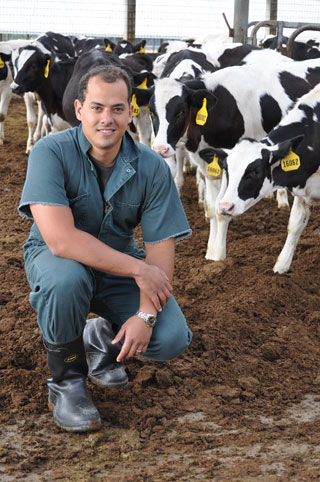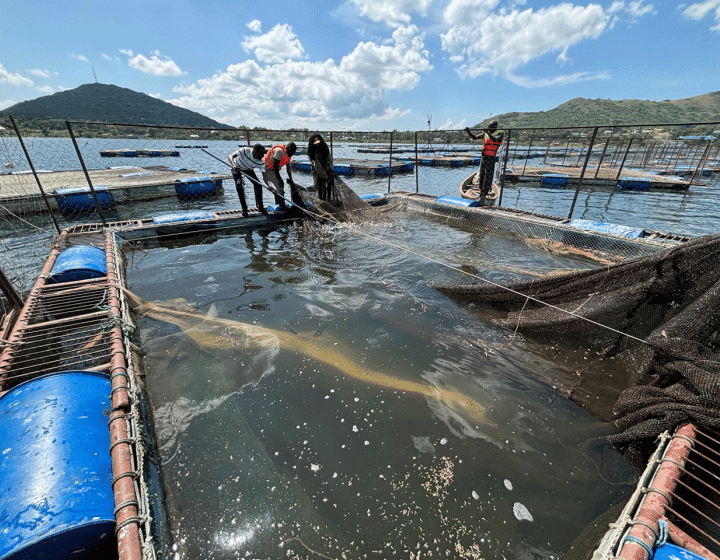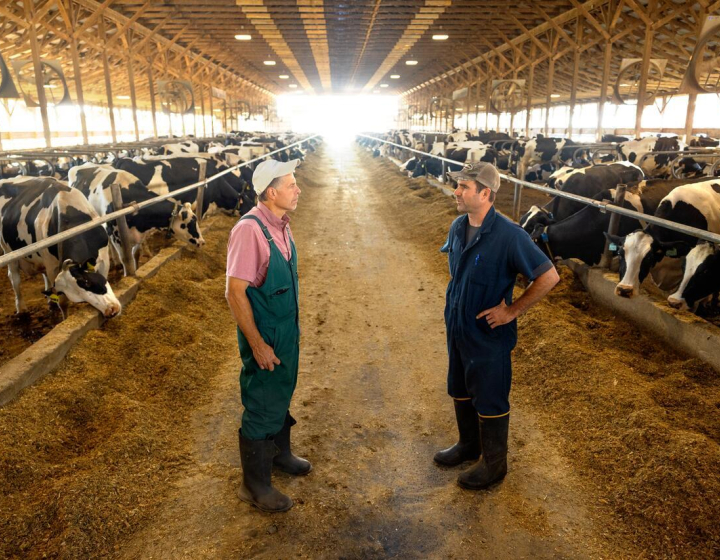Productive and fertile: superstar studs
Even the best medicine has side effects. For years, dairy producers have been selectively breeding their herds to encourage milk production. New insights have confirmed, though, that the relationship between milk production and fertility is negatively correlated, which means that in our efforts to satisfy society’s demand for milk, cheese, yogurt and other dairy products, we’re also hindering the herd’s ability to bear offspring – ironically, tomorrow’s producers.
A new multi-state $3 million USDA grant, with scientists participating from five veterinary colleges across the country, aims to comprehensively investigate the issue. Scientists will identify 12,000 cows that represent different breeding protocols (heat detection/synchronization of ovulation programs), different geographic regions in the United States, and different types of facilities. Phenotypes will be explored using traditional time intervals and conception results (conception rate, number of services per conception, time to first breeding/conception), together with physiologic measures and intermediate events such as resumption of ovarian cyclicity, postpartum uterine health (retained placenta, metritis, and endometritis), and early embryonic and fetal loss. In addition, DNA will be collected from every cow.
With this data, the research team will identify cows in two groups–the most and least fertile–and compare changes in the DNA and corresponding fertility traits using genome-wide analysis. Researchers will also identify significant molecular markers to be included in fertility DNA analysis kits.
 “It is our central hypothesis that reproductive efficiency depends, to some extent, on biological factors that are influenced and modulated by genetic variation,” said Dr. Rodrigo Bicalho, who is a co-principal investigator with Dr. Robert Gilbert for the project at Cornell. “Because of this, we expect to find differences in the DNA for the most fertile cows as compared to the least fertile cows. With this data, we can develop a genetic test that can be used to predict fertility immediately after birth, eliminating our current reliance on the very time-consuming and costly process of selecting from registered and phenotypically beautiful animals with good pedigrees. Sometimes looks and lineage can be deceiving, but currently it takes years to confirm this.”
“It is our central hypothesis that reproductive efficiency depends, to some extent, on biological factors that are influenced and modulated by genetic variation,” said Dr. Rodrigo Bicalho, who is a co-principal investigator with Dr. Robert Gilbert for the project at Cornell. “Because of this, we expect to find differences in the DNA for the most fertile cows as compared to the least fertile cows. With this data, we can develop a genetic test that can be used to predict fertility immediately after birth, eliminating our current reliance on the very time-consuming and costly process of selecting from registered and phenotypically beautiful animals with good pedigrees. Sometimes looks and lineage can be deceiving, but currently it takes years to confirm this.”
The grant also funds the development and delivery of a comprehensive, research-based extension program that will share the best selection practices for bull studs and for on-farm use with the replacement heifers that will improve fertility and the overall productivity of dairy herds. In addition to “extension road shows,” where dairy producers can discuss current strategies for improving fertility, including reproductive management, genetic and genomic selection, the research findings will be shared with the USDA Agriculture Research Service Animal Improvement Programs Laboratory and artificial insemination companies to incorporate fertility breeding values into the national genetic improvement program for dairy cattle and to facilitate a timely translation of research results into commercial tools that could be incorporated into routine farm management.
“Fertility plays a key role in the efficiency of modern dairy production systems, and failure to attain timely conception is one of the major reasons that cows are separated from herds,” said Bicalho. “The proposed genetic test will allow producers to make rational and cost-effective management decisions regarding cow uterine health and fertility. In effect, it will allow producers to identify superstar bulls by testing newborn calves. Instead of gambling on good looks, producers can evaluate the bulls’ genes before incorporating them into the breeding program. To know which bull to use as a sire is the equivalent of winning the lottery.”





